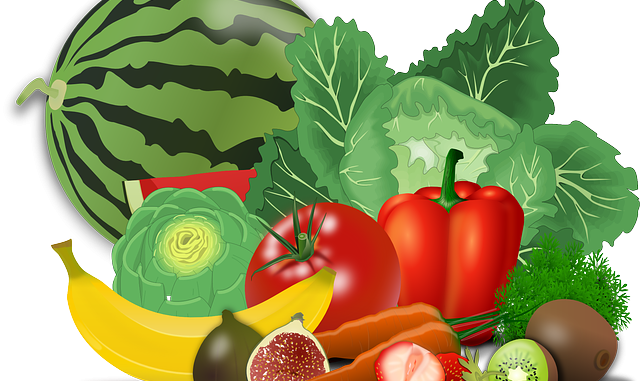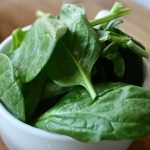
Nutrient-dense foods are found in any food store and cupboard. It’s a case of just knowing what to look for and how to use them. You don’t have to fork out a lot either on specialist superfoods to dine on some of the best nutritious food around. We show you what’s available in those darker reaches of the store cupboard.
Nutrient-dense foods are ones which contains components like dietary fiber which we wrote about the other day, a variety of vitamins and minerals which we all need, and some other compounds which are recognised for their free-radical mopping up abilities. Most of these have unpronounceable names but they are incredible for being antioxidants and pack a terrific nutritional punch.
Here we’ve listed a few of our favourites and to be honest we are continuously adding the good ones because its worth letting everyone know.
Canned Chickpeas
Not only are chickpeas full of fiber and protein, they are chock full of vitamins such as vitamin A, vitamin C and vitamin E. They also contain plenty of folate as well as minerals like potassium, magnesium and iron. Versatile, easy to use in curry and spreads such as hummus.
Baby Leaves Of Spinach
One of the greenest vegetables about is baby spinach. It’s easy to grow as well but also incredibly inexpensive. Add to soups, stews, casseroles or as a side in its own right. Spinach is full of lutein which is an excellent antioxidant especially for eyesight preservation as well as having other benefits.
One study from 2018 that was reported in the journal Neurology found that a diet of just one serving of green leafy vegetables like spinach a day slowed down the rate of age-related cognitive decline.
It’s a plant that is also easy to grow – we have plenty of tips on how to max your vegetable patch with this crazy veg.
Eggs
So cheap! Highly nutrititious. One egg contains 6 grams of protein plus vitamin D, zinc, iodine, selenium, folate and vitamins such as the B vitamins, vitamin A, and choline.
Some people worry about nutrients in yolk because of their cholesterol levels but most nutritionists agree that we can eat an egg every day without too much concern.
Edamame
The basis behind soy and one of the great non-animal foods. A serving offers 8 grams of fiber and 9 grams of protein, as well as iron, potassium, calcium, magnesium, and folate.
Frozen edamame beans are easy to keep and to employ in cooking. Excellent in stir-fries because their texture gives you something firm to chew on.
I like to add to pasta as an alternative to peas and beans although they can easily be slipped in with these foods too.
Salmon
Fish are generally good for you as this web-site will often claim. Salmon, along with other oily fish is probably the best for you because it contains lots of omega-3 fatty acids.
Salmon is easy to prepare and cook. It also makes a very good protein rich food.
The omega-3 fatty acids are essential for the proper functioning of the boy. They help lower the risk of developing so many diseases and generally improve the overall well-being and vigour of the body.
Eating fatty fish helps lower the risk of developing heart disease, having depression (Su et al., 2003) and dementia as well as suffering from other conditions.
Farmed salmon is said to be not as nutritious as wild salmon, but in the absence of fish in many people’s diets, there is not much difference – the nutritional benefits are considerable.
A 100-gram portion of wild salmon contains 2.8 grams of omega-3s, as well as plenty of high-quality animal protein and lots of vitamins and minerals. The main ones are large amounts of magnesium, potassium, selenium and B vitamins like cobalamin (B12). Also great for vitamin D!
Kale
Another green vegetable but one with all the fibre you can get. One cup of fiber only contains 8 calories. It also contains the disease-fighting phytonutrients such as the the vitamins A, C and K. Lots of plant-based omega-3 fatty acids too which gives salmon a run for its money (if salmon could just have legs).
Brussels Sprouts
We listed it as one of our top dietary fiber foods but this vegetable also contains plenty of vitamins like A, C and K. It’s also rich in calcium and folates.
Whilst recipes for cooking them abound the best way is to roast them in olive oil to get the most flavour.
One cup when cooked provides 195 percent of our daily requirement for vitamin K. We need this vitamin for helping us absorb that much wanted mineral, calcium.
Quinoa
What a food! Almost a complete nutritional package in its own right with lots of proteins, potassium, magnesium and calcium. There is also a healthy content of iron and zinc which we need for our immunity. Also a good source of fiber.
References
Su, K. P., Huang, S. Y., Chiu, C. C., & Shen, W. W. (2003). Omega-3 fatty acids in major depressive disorder: a preliminary double-blind, placebo-controlled trial. European Neuropsychopharmacology, 13(4), pp. 267-271.

Leave a Reply